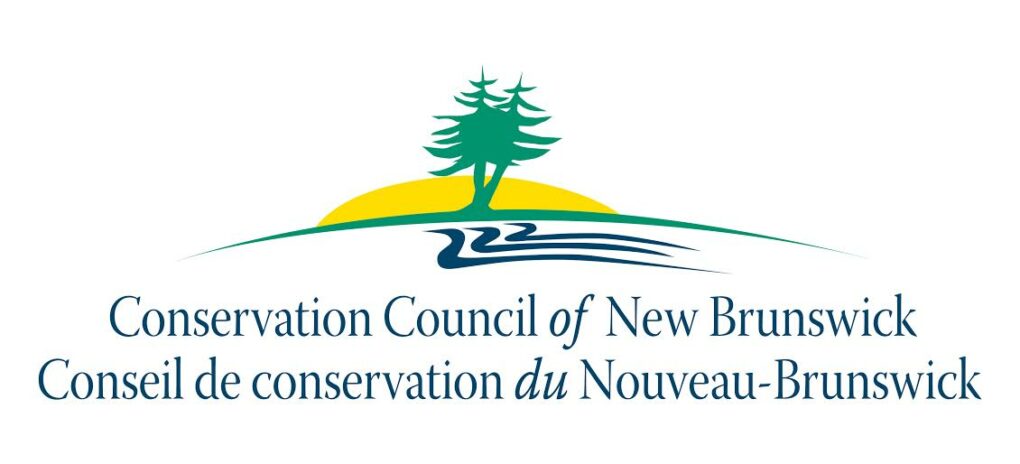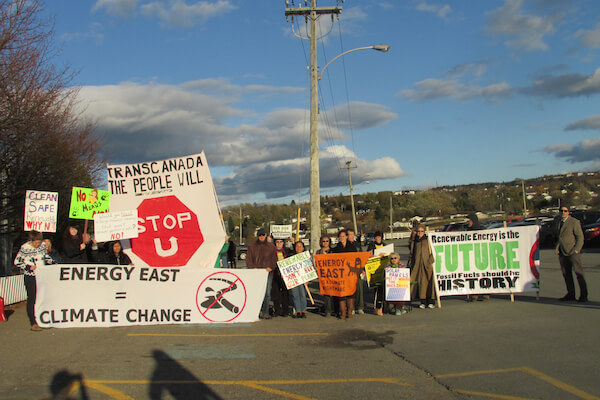The Conservation Council says the TransCanada pipeline could pose big dangers to provincial waterways and marine life. “In ten minutes, a broken pipeline could spew out 1 million litres of dense, sticky oil,” says Lois Corbett, Executive Director of CCNB. “We’ve seen in other areas how devastating an oil spill can be to thriving fishing and tourism communities, and how expensive if not nearly impossible they can be to clean up. And tarsand oil is even more trouble,” she says. CBC’s Terry Seguin talked to Lois Corbett on Nov. 3. Listen.
Listen to Lois on Energy East on CBC Maritime Noon on Nov. 4 (starting at 15:10).
About 300 people attended a Fredericton forum on Energy East with Council of Canadians Maude Barlow, Fundy Baykeeper Matt Abbott and others last night. Check out the key points made at the forum. Listen to Nebraska farmer Ben Gotschall on CBC Radio. Ben is an opponent of the TransCanada Keystone XL pipeline in the U.S. and he’s in New Brunswick this week sharing his experiences.
On the same day that TransCanada filed its 30,000 page application to the National Energy Board for its Energy East pipeline plan, Thursday, Oct. 30, dozens of people demonstrated outside the company’s Saint John open house on the pipeline. Watch the CTV coverage.
Energy East is said to be facing many foes, including Rick Verge. Verge was “shocked when a TransCanada land agent knocked on his door in Titusville, N.B., last year and offered him $1000 to conduct a land survey in exchange for his signature. He refused. He said the land agent showed him a photo in a brochure of what his land would look like after TransCanada was finished with construction.” Read Rick Verge’s story here.
The Alberta Federation of Labour points out that Energy East will not be the panacea for eastern Canada. “Even if Irving Oil wanted to take a portion of the oil out of the pipeline before loading it on ships for export, they couldn’t because the New Brunswick refinery is a ‘cracking refinery’, as opposed to a ‘coking refinery.’ That means that it couldn’t use the diluted bitumen coming down the pipeline as feedstock without investing literally billions of dollars in upgrades. To date, no such upgrades have been announced, so it’s clear that the vast majority of bitumen coming down the pipe will be destined for foreign, not domestic markets,” reads the AFL statement.
23 Quebec municipalities have announced their opposition to Energy East over concern for drinking water. For people living along the St. Lawrence River in Quebec, Energy East threatens tourism, their economic lifeblood. “Water is our life. And I have serious concerns about what this project will mean for our local economy,” said Hugues Tremblay, mayor of Tadoussac, a village at the mouth of the Saguenay River that’s become synonymous with whale watching. Read more.
Thursday in Edmundston! Hear Council of Canadians Chairperson Maude Barlow and others on the risks associated with Energy East. Thursday, Nov. 6th 7;00pm at the Maillet Centre. Énergie Est, Nous courrons le risque, ils en retirent les avantages, 6 Novembre 2014, 19:00h, Édifice Maillet, Edmundston. More on the Energy East: Our Risk, Their Reward Tour.
Check out the antics of EnergyYikesPipeline, the official parody twitter page of TransCanada’s Energy East pipeline.
 To receive updates on Energy East, email Tracy at forest@conservationcouncil.ca.
To receive updates on Energy East, email Tracy at forest@conservationcouncil.ca.

